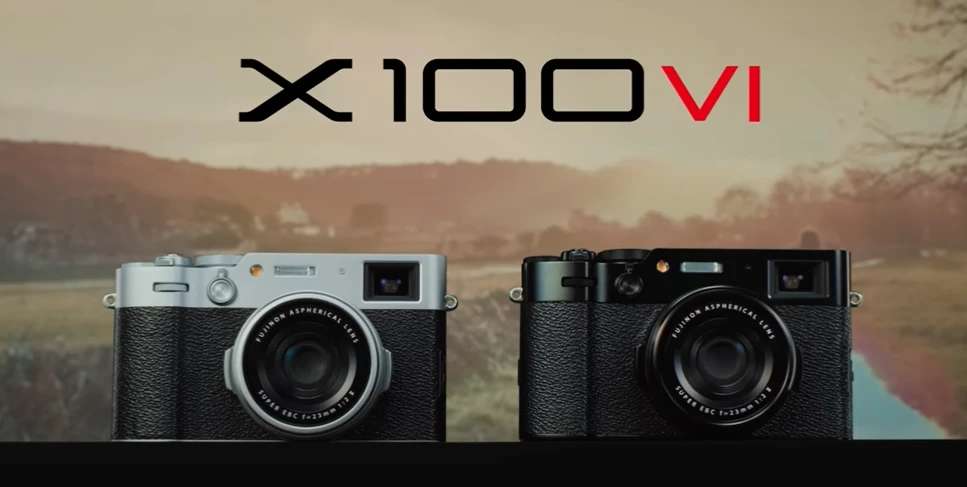Picking the best point and shoot camera can be tough with so many choices. These cameras are great if you want to take good pictures without a lot of fuss. They are small, easy to carry, and help you get clear shots with just a click.
When you’re choosing a camera, look for a few key things. First, make sure it has high resolution—20 megapixels or more. This helps you get sharp, detailed photos. Next, check the aperture. A wide aperture, like f/2.8, makes the background look blurry, which makes your subject stand out.
Think about how the camera fits into your life. Is it light and easy to carry? Is it strong enough to handle a little rain or dust? Most importantly, will you use it often? As photographer Erin Sullivan says, “Make sure you pick a camera you will actually use.”We’ve done the hard work and found the Fujifilm X100VI as the best overall choice. It’s easy to use and takes great pictures. Keep reading to see more top picks and learn how to choose the right camera for you!
Top Point and Shoot Digital Camera: Our Favorite Picks
- Best Point-and-Shoot Digital Camera Overall – Fujifilm X100VI
- Best Point and Shoot Digital Camera for Beginners – Canon PowerShot G7 X Mark III
- Best Budget Point and Shoot Digital Camera – Panasonic Lumix ZS70
- Best Waterproof Point and Shoot Camera – Olympus Tough TG-6
- Best Digital Point and Shoot Camera for Travel – Ricoh GR IIIx
- Best Digital Point and Shoot Camera for Low-Light Photography – Sony RX100 VII
Best Point and Shoot Digital Camera Overall – Fujifilm X100VI
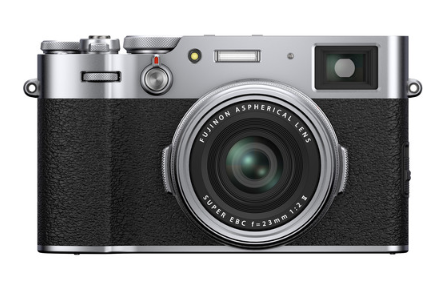
| SPECIFICATIONS | Sensor size: APS-C Resolution: 26.1MP Viewfinder: Hybrid OVF/EVF, 3,690K dots Monitor: 3.0-inch tilting touchscreen, 1,620K dots Autofocus: 425-point phase detection AF Maximum continuous shooting rate: 20fps (electronic), 11fps (mechanical) Movies: 4K at 30p User level: Enthusiast |
| REASONS TO BUY | Compact and stylish design Excellent image quality with Film Simulation modes Fast and reliable autofocus |
| REASONS TO AVOID | Fixed lens limits versatility No in-body stabilization |
| BUY IT IF | DON’T BUY IT IF |
|---|---|
| ✅ You love street photography and need a discreet, high-quality camera: The compact size and quiet shutter make the X100VI ideal for candid shots without drawing attention. | ❌ You need a camera with interchangeable lenses: The X100VI has a fixed 23mm f/2 lens, which is versatile but not adaptable for all types of photography. |
| ✅ You appreciate classic design with modern performance: It combines a vintage aesthetic with cutting-edge features like 4K video and a fast autofocus system. | ❌ You frequently shoot in low-light conditions: While the lens is fast, the lack of in-body stabilization might limit handheld shooting in low light. |
The Fujifilm X100VI continues the legacy of the X100 series, known for its stylish design, tactile controls, and excellent image quality. The updated 26.1MP X-Trans CMOS 4 sensor, paired with the X-Processor 4, delivers stunning photos with rich colors and sharp details. Fujifilm’s renowned Film Simulation modes add creative versatility, allowing photographers to mimic classic film looks right in the camera.
The X100VI introduces a tilting touchscreen for more flexible composition and a hybrid optical/electronic viewfinder that remains one of its standout features. It also supports high-speed continuous shooting and 4K video recording at 30p, making it suitable for both stills and video enthusiasts. However, its fixed 23mm lens (equivalent to 35mm) might not be everyone’s cup of tea, especially for those who prefer zoom or interchangeable lenses.
Overall, the Fujifilm X100VI is a perfect choice for street photographers and travel enthusiasts who want a high-quality, compact camera that offers superb image quality and a delightful shooting experience. Its limitations, like the absence of in-body stabilization and a fixed lens, are worth considering, but its strengths in design, build, and output make it a strong contender in the compact camera market.
Best Point and Shoot Digital Camera for Beginners – Canon PowerShot G7 X Mark III
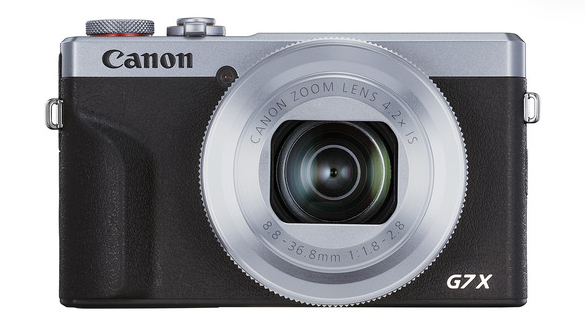
| SPECIFICATIONS | Sensor size: 1-inch Resolution: 20.1MP Viewfinder: None Monitor: 3.0-inch tilting touchscreen, 1,040K dots Autofocus: 31-point contrast-detection AF Maximum continuous shooting rate: 20fps Movies: 4K at 30p, Full HD at 120p User level: Beginner to Intermediate |
| REASONS TO BUY | Compact size and lightweight design Excellent for vlogging with a flip-up touchscreen Impressive 4K video without crop |
| REASONS TO AVOID | No viewfinder Autofocus can struggle in low light |
| BUY IT IF | DON’T BUY IT IF |
|---|---|
| ✅ You are a vlogger or content creator looking for a portable, high-quality camera: The G7 X Mark III is ideal for on-the-go video recording with its flip-up screen and 4K capabilities. | ❌ You need a camera with a viewfinder: The G7 X Mark III doesn’t have an electronic viewfinder, which can be limiting in bright outdoor conditions. |
| ✅ You want a versatile point-and-shoot camera for both photos and videos: With great video features and solid still image quality, it serves as an all-in-one device. | ❌ You need fast, reliable autofocus in low light: While it performs well in good lighting, the autofocus can be less dependable in darker settings. |
The Canon PowerShot G7 X Mark III is one of the top choices for vloggers and content creators who need a compact, easy-to-use camera that doesn’t compromise on quality. It features a 1-inch, 20.1MP sensor that captures bright, detailed photos and 4K videos without any cropping. The camera’s 3.0-inch tilting touchscreen is a favorite among vloggers, allowing for easy framing and shooting of selfies or video blogs.
With its 20fps continuous shooting rate, the G7 X Mark III is also capable of capturing fast action, making it a versatile tool for those who want to switch between video and stills seamlessly. The built-in microphone port is a significant addition for content creators who want better audio quality without needing bulky external recorders.
However, the lack of a viewfinder could be a dealbreaker for some photographers who prefer a traditional shooting experience, especially in bright sunlight where screens can be hard to see. The autofocus system, while fast and generally accurate, can occasionally struggle in low-light situations, affecting both stills and video.
Overall, the Canon PowerShot G7 X Mark III is a fantastic compact camera for anyone looking to create high-quality content without the hassle of larger, more complex setups. It’s perfect for beginners and intermediate users who need a reliable and portable companion for both photography and video work.
Best Budget Point and Shoot Digital Camera – Panasonic Lumix ZS70
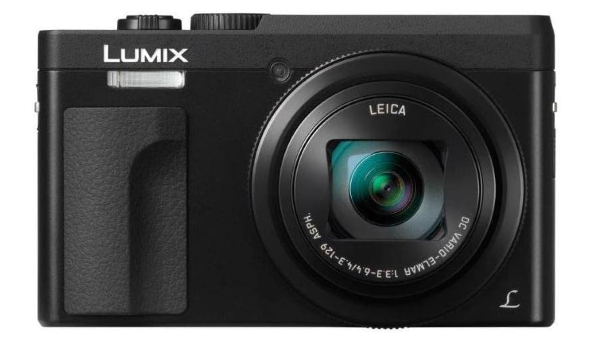
| SPECIFICATIONS | Sensor size: 1/2.3-inch Resolution: 20.3MP Viewfinder: 1,166K-dot electronic viewfinder Monitor: 3.0-inch tilting touchscreen, 1,040K dots Autofocus: 49-point contrast-detection AF Maximum continuous shooting rate: 10fps Movies: 4K at 30p, Full HD at 60p User level: Beginner to Intermediate |
| REASONS TO BUY | Powerful 30x optical zoom lens Compact and lightweight design, ideal for travel 4K video and 4K photo modes |
| REASONS TO AVOID | Small sensor can struggle in low light Autofocus can be slow in certain conditions |
| BUY IT IF | DON’T BUY IT IF |
|---|---|
| ✅ You need a compact camera with a powerful zoom range for travel: The ZS70’s 30x optical zoom (24-720mm equivalent) makes it perfect for capturing everything from wide landscapes to distant subjects. | ❌ You frequently shoot in low-light environments: The smaller 1/2.3-inch sensor isn’t as strong in low light compared to larger sensor cameras, which could affect image quality. |
| ✅ You want a versatile all-in-one camera: It offers a range of shooting modes, 4K video recording, and creative filters, making it a great choice for travel, street, and everyday photography. | ❌ You need fast and accurate autofocus for action shots: The contrast-detection AF system can be a bit sluggish when focusing on fast-moving subjects. |
The Panasonic Lumix ZS70, also known as the TZ90 in some regions, is a compact travel zoom camera that offers great versatility in a pocket-friendly size. It features a 20.3MP sensor and a powerful 30x optical zoom lens that ranges from 24mm wide-angle to 720mm telephoto, making it ideal for travelers who want to capture both expansive landscapes and detailed close-ups without changing lenses.
One of the standout features of the ZS70 is its 4K video recording capability, which allows users to shoot ultra-high-definition movies. The camera also includes Panasonic’s unique 4K Photo mode, which lets you extract 8MP stills from 4K video bursts—great for capturing fast action moments that would be hard to time with traditional shooting. The tilting 3.0-inch touchscreen and built-in electronic viewfinder offer flexibility in composition, making it easier to shoot in various lighting conditions.
However, the ZS70 does have some limitations. Its smaller sensor size means it isn’t as well-suited for low-light photography as some larger sensor competitors. The autofocus, while fine for most situations, can be a bit slow when shooting in challenging conditions or when trying to lock focus on moving subjects.
Overall, the Panasonic Lumix ZS70 is an excellent choice for travelers and casual photographers who need a compact camera with a huge zoom range and a decent set of features for both photos and videos. It’s a reliable all-in-one solution that can handle most travel and everyday photography needs without taking up much space in your bag.
Best Waterproof Point and Shoot Camera – Olympus Tough TG-6
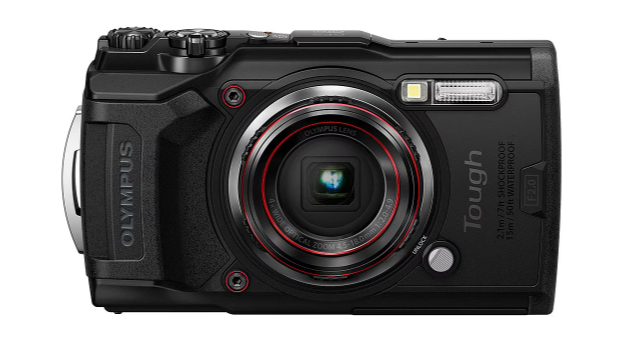
| SPECIFICATIONS | Sensor size: 1/2.3-inch Resolution: 12MP Viewfinder: None Monitor: 3.0-inch fixed LCD, 1,040K dots Autofocus: Contrast-detection AF Maximum continuous shooting rate: 20fps Movies: 4K at 30p, Full HD at 120p User level: Beginner to Intermediate |
| REASONS TO BUY | Extremely durable and waterproof up to 50 feet Great macro and underwater shooting modes Shoots 4K video and high-speed Full HD video |
| REASONS TO AVOID | Small sensor limits low-light performance No manual exposure controls for advanced users |
| BUY IT IF | DON’T BUY IT IF |
|---|---|
| ✅ You need a camera that can handle extreme conditions: The TG-6 is waterproof, shockproof, freeze-proof, and crushproof, making it perfect for hiking, diving, skiing, or any rugged adventure. | ❌ You want top-notch image quality, especially in low light: The TG-6’s small sensor doesn’t perform as well as larger sensor cameras in dim conditions. |
| ✅ You enjoy macro and underwater photography: The TG-6 offers unique macro modes and underwater shooting modes that capture incredible detail and color underwater or up close. | ❌ You need manual controls for creative photography: This camera is built for durability and ease of use, but it lacks advanced manual settings for more experienced photographers. |
The Olympus Tough TG-6 is the ultimate rugged camera designed for those who love adventure and need a camera that can keep up with their outdoor activities. Built to withstand harsh conditions, the TG-6 is waterproof to 50 feet (15 meters), shockproof from 7 feet (2.1 meters), freeze-proof to 14°F (-10°C), and crushproof up to 220 pounds (100 kg). It’s a go-anywhere camera that doesn’t need a protective case, making it ideal for diving, snorkeling, skiing, and even extreme sports.
The TG-6 is equipped with a 12MP sensor, which may seem modest in resolution, but it helps maintain good performance in a range of lighting conditions. It features a bright f/2.0 lens that is particularly effective in underwater and low-light settings. The camera excels in macro photography with its unique “microscope mode,” allowing you to focus on subjects as close as 1cm away. The built-in underwater modes and white balance settings optimize color and clarity, providing impressive results even without post-editing.
Video capabilities are also robust, with 4K recording at 30p and high-speed Full HD recording at 120p, which is excellent for slow-motion footage. While the TG-6 offers some manual settings and RAW shooting, it’s primarily designed for ease of use in challenging environments, making it more suitable for beginner to intermediate users rather than professionals looking for full manual control.
Overall, the Olympus Tough TG-6 is the perfect choice for adventurers who need a reliable, durable, and versatile camera that can go wherever they go. Whether it’s underwater, in the mountains, or on a sandy beach, the TG-6 is built to survive and capture all the action.
Best Digital Point and Shoot Camera for Travel – Ricoh GR IIIx
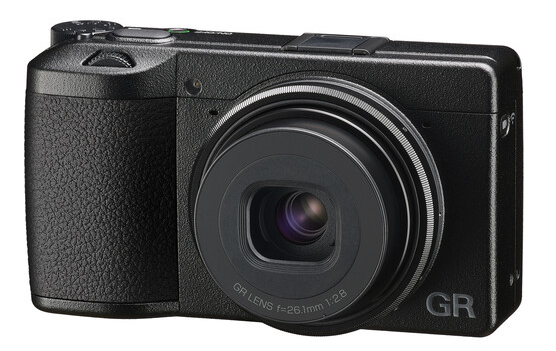
| SPECIFICATIONS | Sensor size: APS-C Resolution: 24.2MP Viewfinder: None (optional external viewfinder available) Monitor: 3.0-inch fixed touchscreen, 1,037K dots Autofocus: Hybrid AF (contrast and phase detection) Maximum continuous shooting rate: 4fps Movies: Full HD at 60p User level: Enthusiast |
| REASONS TO BUY | Compact size with a high-quality APS-C sensor Excellent image quality and sharp 40mm equivalent lens Responsive touchscreen and intuitive controls |
| REASONS TO AVOID | Limited video capabilities (no 4K video) No built-in viewfinder |
| BUY IT IF | DON’T BUY IT IF |
|---|---|
| ✅ You need a pocket-sized camera with DSLR-like image quality: The GR IIIx packs a large APS-C sensor into a compact body, making it ideal for discreet street and travel photography. | ❌ You are looking for a camera with extensive video capabilities: The GR IIIx is focused on still photography and offers only Full HD video recording. |
| ✅ You appreciate a minimalist, straightforward shooting experience: The GR IIIx focuses on stills, with a simple interface and customizable controls for quick, intuitive shooting. | ❌ You need a camera with a built-in viewfinder: The GR IIIx relies solely on its LCD screen for composing shots, which can be limiting in bright sunlight. |
The Ricoh GR IIIx is a premium compact camera designed for photographers who prioritize image quality, portability, and simplicity. It features a large 24.2MP APS-C sensor and a new 26.1mm f/2.8 lens (equivalent to 40mm in full-frame terms), providing sharp, high-resolution images with excellent detail and low noise, even in challenging lighting conditions. The 40mm focal length is ideal for street, documentary, and travel photography, offering a natural perspective that feels close to what the human eye sees.
The GR IIIx maintains the classic Ricoh GR series design with its sleek, minimalist body that fits easily into a pocket, making it perfect for photographers who want a discreet, high-quality camera they can take anywhere. The camera’s hybrid autofocus system combines contrast and phase detection for faster and more accurate focusing, while the responsive 3.0-inch touchscreen simplifies navigation and focus point selection.
However, the GR IIIx has some limitations, particularly for those who want a versatile multimedia camera. It lacks 4K video recording, providing only Full HD video at 60p, which might not satisfy video creators. Additionally, the absence of a built-in viewfinder can be a downside for photographers who prefer composing through a viewfinder, although an optional external viewfinder is available.
Overall, the Ricoh GR IIIx is a standout choice for street and travel photographers who want a compact camera with outstanding image quality and a focus on stills. Its portability, sharp lens, and intuitive handling make it a strong contender for anyone seeking a high-quality, go-anywhere camera.
Best Digital Point and Shoot Camera for Low-Light Photography – Sony RX100 VII
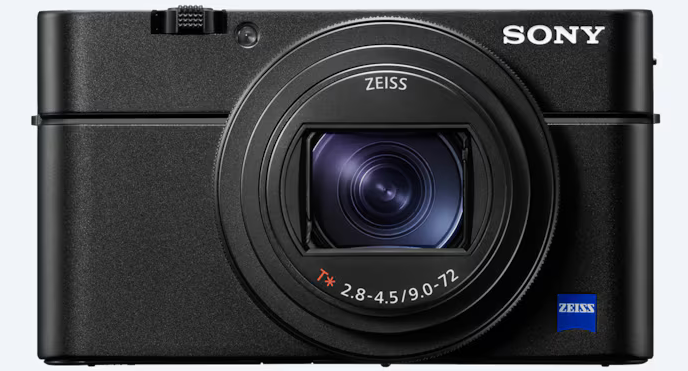
| SPECIFICATIONS | Sensor size: 1-inch Resolution: 20.1MP Viewfinder: Pop-up electronic viewfinder, 2,359K dots Monitor: 3.0-inch tilting touchscreen, 921K dots Autofocus: 357-point phase-detection AF, 425-point contrast-detection AF Maximum continuous shooting rate: 20fps (with no blackout) Movies: 4K at 30p, Full HD at 120p, super slow motion up to 1000fps User level: Intermediate to Advanced |
| REASONS TO BUY | Fast and accurate autofocus with Real-time Eye AF and Animal Eye AF Excellent image quality and 4K video capabilities Compact size with versatile 24-200mm zoom lens |
| REASONS TO AVOID | High price for a compact camera Limited battery life compared to some rivals |
| BUY IT IF | DON’T BUY IT IF |
|---|---|
| ✅ You want a high-performance compact camera for both stills and videos: The RX100 VII is packed with features like 4K video, fast autofocus, and burst shooting, making it ideal for hybrid shooters. | ❌ You are looking for an entry-level compact camera: The RX100 VII’s advanced features and price tag may be overkill for beginners. |
| ✅ You need a versatile travel camera with a powerful zoom: The 24-200mm lens range covers a wide array of shooting scenarios, from wide landscapes to distant subjects. | ❌ You need a camera with extensive battery life for extended shooting sessions: The RX100 VII’s battery life is decent but not exceptional, and you’ll likely need a spare battery for a full day of intensive shooting. |
The Sony RX100 VII is the latest model in Sony’s acclaimed RX100 series, known for its combination of portability, advanced features, and excellent image quality. The RX100 VII builds on this legacy with a 20.1MP 1-inch stacked Exmor RS CMOS sensor and a BIONZ X processor, delivering fast performance, high-quality stills, and professional-grade 4K video. Its versatile 24-200mm f/2.8-4.5 zoom lens offers a broad focal range, making it a superb all-in-one solution for travel, street photography, portraits, and even wildlife.
One of the standout features of the RX100 VII is its advanced autofocus system, which boasts 357 phase-detection points and 425 contrast-detection points, ensuring fast and accurate focusing. The Real-time Eye AF (for both humans and animals) and Real-time Tracking significantly enhance portrait and action photography. The camera also supports blackout-free continuous shooting at up to 20fps, allowing you to capture fast-moving subjects without missing a moment.
For video enthusiasts, the RX100 VII is equally impressive. It offers 4K video recording with full pixel readout and no pixel binning, delivering sharp and detailed footage. It also includes features like S-Log3 for color grading, an integrated microphone jack for better audio recording, and super slow-motion capabilities up to 1000fps. However, like many compact cameras, it lacks a fully articulating screen, which may be a minor downside for vloggers.
While the RX100 VII excels in almost every area, it comes at a premium price, and its compact size means a smaller battery that may not last a full day of heavy use. Nonetheless, for photographers and videographers who need a pocket-sized powerhouse capable of delivering high-quality results across a range of scenarios, the Sony RX100 VII remains one of the best compact cameras on the market.
Key Factors to Consider When Buying a Point-and-Shoot Digital Camera
Choosing the right point-and-shoot camera can be simple if you know what to look for. Let’s break down the key things to help you pick the perfect camera for you.
Sensor Size and Resolution
The sensor is like the camera’s eye. Bigger sensors see more light, which makes photos clearer and brighter. Cameras like the Fujifilm X100VI and Ricoh GR IIIx have big sensors, so they take sharp pictures even in low light. Smaller cameras, like the Panasonic Lumix ZS70 and Olympus Tough TG-6, are easier to carry but might not be as sharp in low light. If you want bright, clear photos, look for a camera with a bigger sensor and higher resolution.
Lens and Zoom
The lens decides how close or wide your photos can be. Zoom lenses, like those on the Sony RX100 VII and Panasonic Lumix ZS70, let you capture both wide views and close-ups. Cameras like the Fujifilm X100VI and Ricoh GR IIIx have fixed lenses. They don’t zoom, but they give you very sharp photos. If you like to zoom in and out, choose a camera with a good zoom lens.
Size and Build Quality
Think about how often you’ll carry your camera. The Sony RX100 VII is small and light, great for pockets. The Olympus Tough TG-6 is built to be tough, so it’s perfect for outdoor adventures. If you want a camera that feels solid and strong, the Fujifilm X100VI has a metal body. Pick a camera that is easy to hold and fits your needs.
Battery Life and Memory
You want your camera to last all day. Cameras like the Canon PowerShot G7 X Mark III and Panasonic Lumix ZS70 have good battery life, so you can take lots of pictures before charging. If you plan to shoot a lot, make sure your camera can hold a big memory card so you don’t run out of space.
Price and Budget
How much you spend matters. The Fujifilm X100VI and Sony RX100 VII are more expensive because they have top features and great image quality. If you want something more budget-friendly, the Panasonic Lumix ZS70 and Olympus Tough TG-6 are good options. Decide what features are most important to you and choose a camera that fits your budget.
Think about what you need—clear photos, a tough body, or a good zoom. With these tips, you can find the perfect point-and-shoot camera for your adventures.
Tips to Take Better Photos with Your Point-and-Shoot Camera
Point-and-shoot cameras are easy to use, and with a few tips, you can take even better pictures. Here are some simple ways to help you get the most from your camera.
Hold Your Camera Still
Hold your camera with both hands to keep it steady. This helps you avoid blurry photos. Keep your elbows close to your body. If you need more support, lean against a wall or a tree. This makes your photos clearer and sharper.
Use Natural Light
Good lighting makes a big difference. Try to use natural light when you can. Early morning or late afternoon light looks soft and warm. Avoid using the flash indoors. Move near a window to use soft natural light instead.
Try Different Angles
Change how you take pictures by trying new angles. Get down low or stand up high for a different look. Move around and find the best spot. This helps make your pictures more fun and interesting.
Use Your Camera’s Modes
Your camera has special modes to help you. Portrait Mode is great for people, and Landscape Mode works for outdoor scenes. Macro Mode is good for close-up shots of small things. Try these modes to see which one works best for what you are shooting.
Keep Your Camera Clean
A clean camera gives you better photos. Wipe the lens with a soft cloth and keep the camera in a case when not in use. This keeps it safe from dust and scratches.
By following these tips, you can take great photos with your point-and-shoot camera and enjoy capturing special moments.
Conclusion: Pick the Best Point and Shoot Camera for You
Choosing the best point-and-shoot camera depends on what you need. The Fujifilm X100VI is great for clear, sharp photos, especially for street or travel shots. The Sony RX100 VII works well if you want a small camera with zoom and good video options. If you are just starting out or want to save money, the Panasonic Lumix ZS70 is a smart choice. The Canon PowerShot G7 X Mark III is perfect for making videos and vlogs. For street photos on the go, the Ricoh GR IIIx is a good pick. If you need a camera for adventures, choose the Olympus Tough TG-6 because it’s waterproof and strong. Think about what you want most—great photos, video, or a tough build—and pick the camera that fits you best!
FAQs: Best Point and Shoot Digital Cameras
1. What is a point-and-shoot camera?
A point-and-shoot camera is small and easy to use. You don’t need to change lenses or settings. Just point, click, and take a photo. It’s great for beginners or anyone who wants nice photos without much setup.
2. Which camera is best for travel?
The Sony RX100 VII is great for travel. It’s small, light, and has a good zoom for faraway shots. It’s perfect for both photos and videos, making it great for travel memories.
3. Are point-and-shoot cameras good for beginners?
Yes! Point-and-shoot cameras are very beginner-friendly. They have automatic settings to help you take great photos easily. The Panasonic Lumix ZS70 and Canon PowerShot G7 X Mark III are good choices for beginners.
4. Can I take professional-looking photos with a point-and-shoot camera?
Yes, some point-and-shoot cameras, like the Fujifilm X100VI and Ricoh GR IIIx, can take very clear, sharp photos. They are great for street and travel photography because they are easy to carry and provide high-quality images.
5. Which camera is best for videos and vlogs?
The Canon PowerShot G7 X Mark III is perfect for videos and vlogs. It has a flip screen to see yourself while recording, plus great video quality and sound.
6. What is the best camera for outdoor adventures?
The Olympus Tough TG-6 is the best for outdoor fun. It is waterproof and shockproof, so it can handle rough conditions like hiking, swimming, and exploring.
7. Do I need to spend a lot to get a good camera?
No, you don’t have to spend a lot. While some models like the Fujifilm X100VI cost more, budget-friendly options like the Panasonic Lumix ZS70 still take good photos.
8. How can I take care of my camera?
Keep your camera clean with a soft cloth. Store it in a case to protect it from dust and scratches. Keep it dry, especially if it’s not waterproof. This helps your camera last longer.
9. Why choose a point-and-shoot camera over a phone?
Point-and-shoot cameras often have better zoom, bigger sensors, and more control over settings than phones, giving you clearer and more detailed photos.


